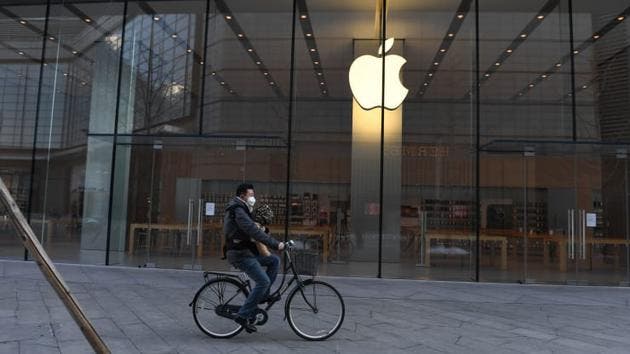Due to the new low-cost iPhone, the performance of Apple in China continued to pick up in April.
Earlier this year, Apple temporarily closed its stores in China because of the new coronavirus epidemic. Of course, it led to a sudden drop in iPhone sales. Later, after gradually resuming production in China, the Apple retail stores reopened.
Also Read: iPhone Sales Fell Sharply In April: Plummeted 77%
However, analysts still warned that the technology giant may face some challenges in China’s most important market.
What iPhone Sales Do Research Companies Predict?
Data compiled by multiple companies shows that Apple has been getting better and better since February this year. Affected by the closure of the stores, iPhone sales in China fell by 60% year-on-year in February this year. By mid-March, all stores in China had reopened.
According to data from CINNO Research, Apple sold 3.9 million iPhones in China in April, up 160% from 1.56 million in March.

Another data from IDC shows Apple’s April-sell-in shipments were about 3 million units, an increase of about 30% from the previous month. Sell-in shipments refer to the number of iPhones Apple sells to Chinese retail partners and can be used to measure future demand.
According to data from the China Institute of Information and Communications, China’s smartphone shipments in April this year increased by 94% month-on-month to 40.8 million units.
WPIC pointed out that the number of products sold by Apple through the Tmall official flagship store in April this year increased by 40% year-on-year to $127.4 million. iPhone sales through Tmall increased by 33% month-on-month, exceeding $80 million.
At the same time, there are signs that Apple’s service revenue has improved as well. Although Apple has many services such as Apple Music and iCloud, it can currently only be estimated based on the Chinese consumer spending of the App Store. According to data from Sensor Tower, this April figure was $1.53 billion, an increase of 7% from the previous month.
Apple has not commented on this.
However, a number of data indicate that Apple’s business in China is gradually improving. But analysts warned that the company may face resistance in the coming months. It’s conditioned by a few reasons.
1. iPhone SE short-term effects
Apple released the second-generation iPhone SE in mid-April this year, which was then sold in China. This product’s price starts at 3299 yuan ($462).
CINNO said that although the iPhone SE went on sale at the end of April this year, it accounted for 24% of Apple’s total sales of 3.9 million iPhones in April.
In its turn, IDC said that the iPhone SE accounted for about 8% of shipments in April.
In addition, there are also concerns that the epidemic may impact the Chinese economy in the second half of the year, thereby affecting consumer spending.
2. China’s 5G market
At the same time, after China began to deploy 5G networks at the end of last year, 5G smartphones began to develop rapidly in China. This new generation of mobile networks can provide ultra-high speeds.
Many Chinese manufacturers including Huawei and Xiaomi have launched 5G smartphones, but Apple has not yet released 5G phones. According to Counterpoint Research’s calculations, 5G equipment is expected to account for 40% of China’s total smartphone sales in 2020. So this matter will have a great impact.
If Apple does not launch 5G smartphones, consumers may choose products from other manufacturers (or wait for Apple to launch new models before buying).





